Contents

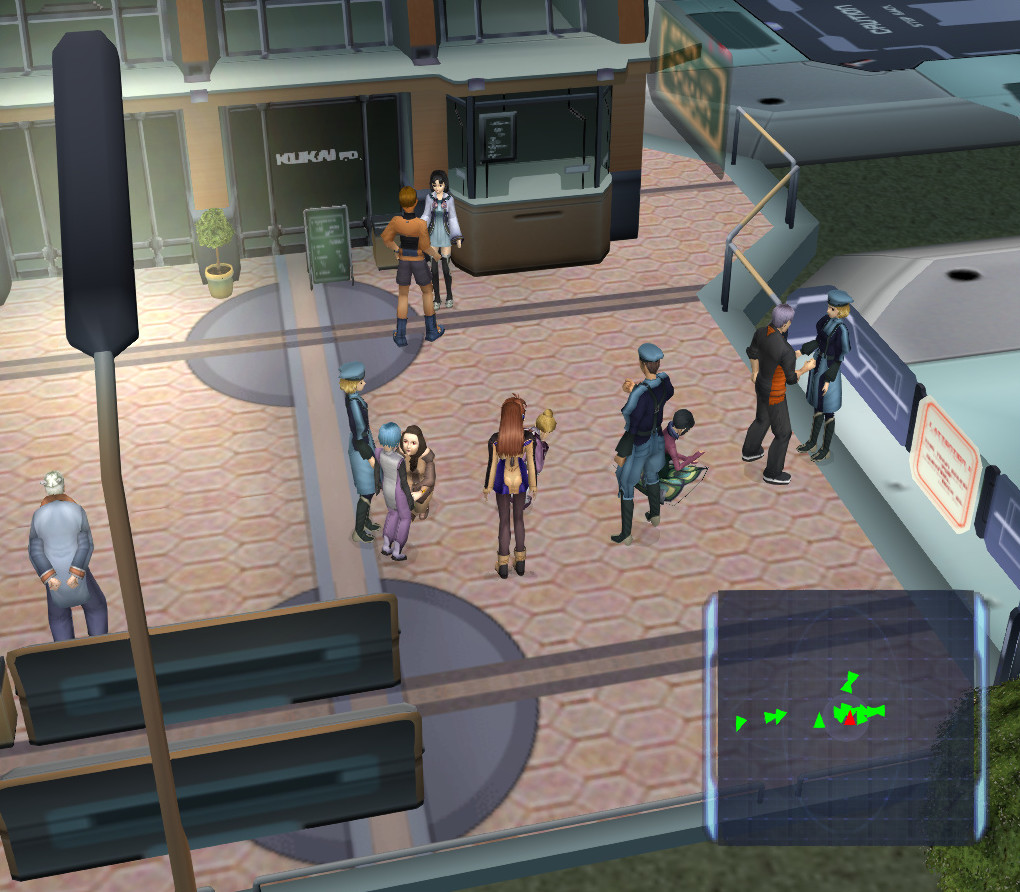
Part 1: Story and Characters
In the first few hours, Xenosaga Episode I drops an action cutscene that shows it isn’t playing around. Your dreadnought is attacked by the Gnosis, enemies impervious to their weapons because they exist out of phase with the material world. This fact doesn’t, unfortunately, limit the alien’s offensive capabilities, and the Gnosis tear through the human fleet unopposed, leaving starship debris and cold bodies in their wake.
That is, until KOS-MOS is activated. The female cyborg who can fight the Gnosis has been at the centre of our attention since the start of the game, but this is the first time we see her awake, and the outcome is devastating. Spinning, flipping and shooting lasers in all directions, staring with red eyes of death, we are left in awe of KOS-MOS — and of Monolith Soft’s ability to construct an action scene.
KOS-MOS is an action figure, in more ways than one. She has movable parts. Take her arms off, replace them with weapons: a gun, a spear, a scythe. Went she enters battle mode, her visors clicks down over her face.
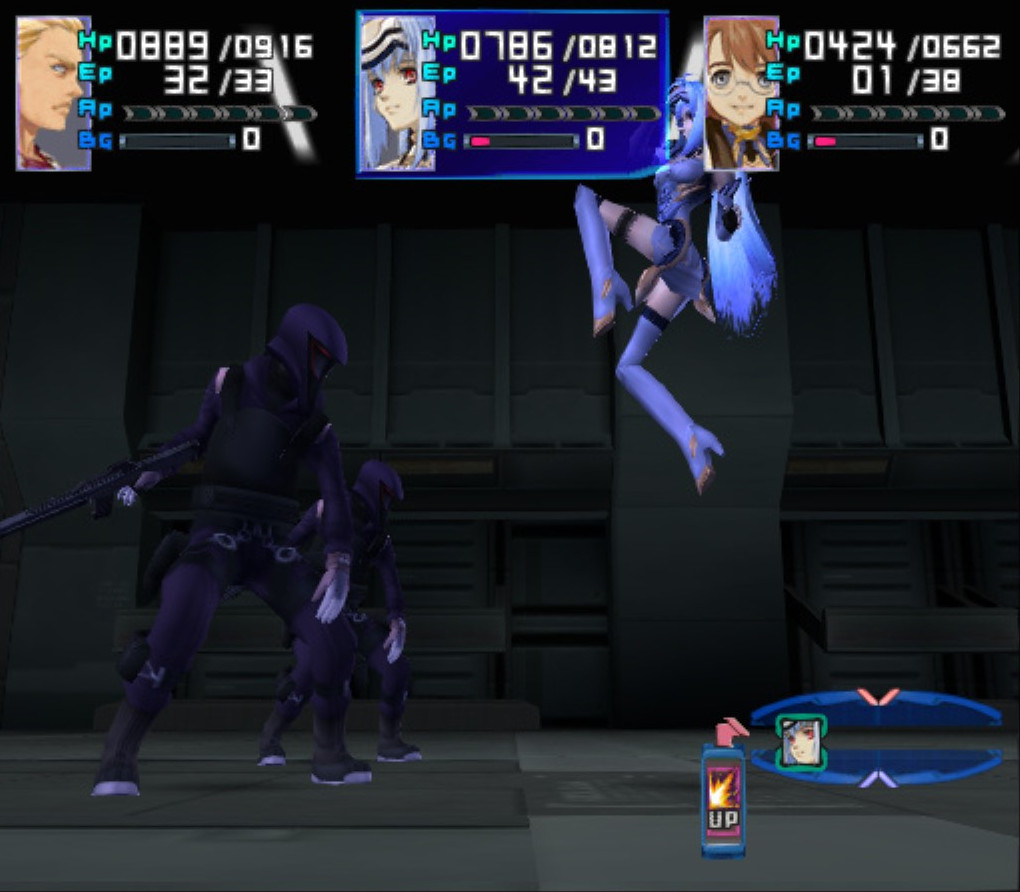
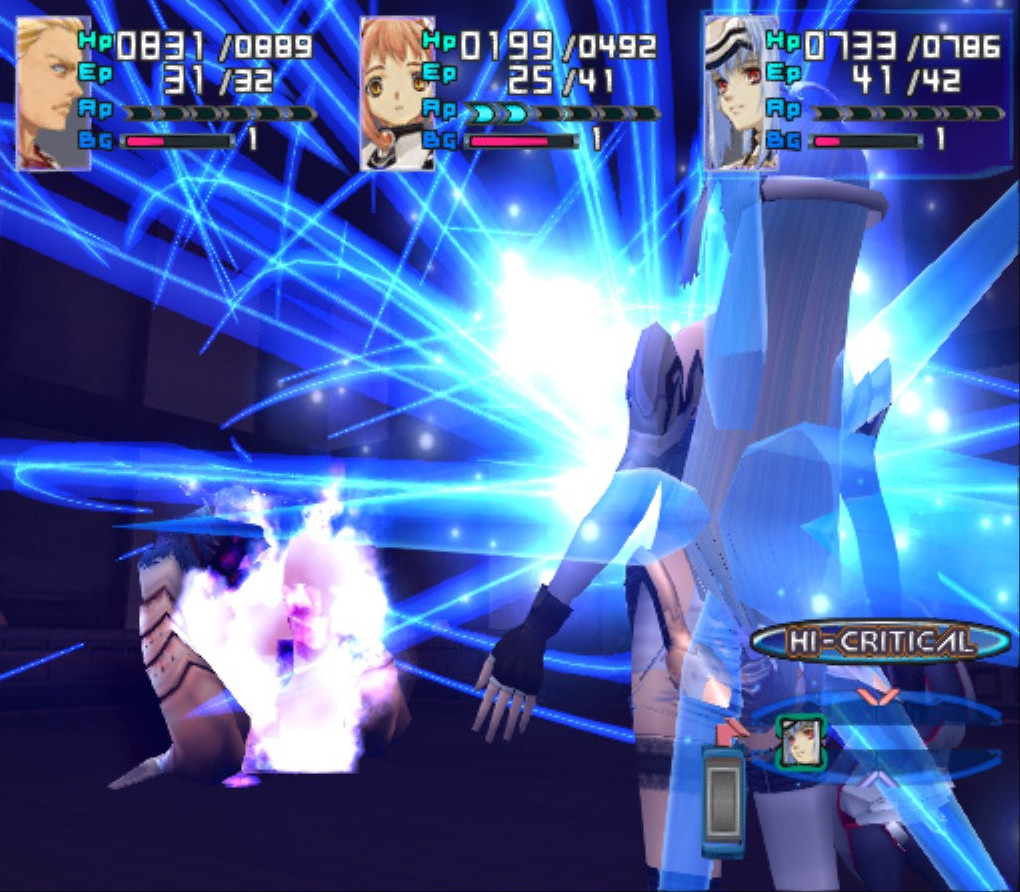
She is the coolest toy, which is just one of the ways KOS-MOS is similar to Weltall, the coolest toy in Xenogears. As Weltall was to Fei, KOS-MOS is to Shion: an overpowered machine, allied to the main character, but with a mysterious and grand role to play in the cosmic story.
Whether we can also draw lines from KOS-MOS to Aegis in Persona 3 or 2B in Neir Automata, I can’t say: a full genealogy of hot female androids was beyond the scope of my research. But the developer’s sanitised explanation for KOS-MOS’s creation satisfies me. This is a mech-ridden universe, but even the most powerful giant robot cannot fight the Gnosis. The secret weapon had to exist on a different technological path, and the design — small, human, dexterous, feminine — reflects this.
It has been awhile since I’ve fallen in love with a group of characters like these. Every time Ziggy asks a question with cyborg stoicism but human concern. Every time Jr., the physically smallest character, is the first to step forwards in the face of danger. Every time Shion is filled with sympathy for another character. I love them all. I had no complaints with the voice acting.
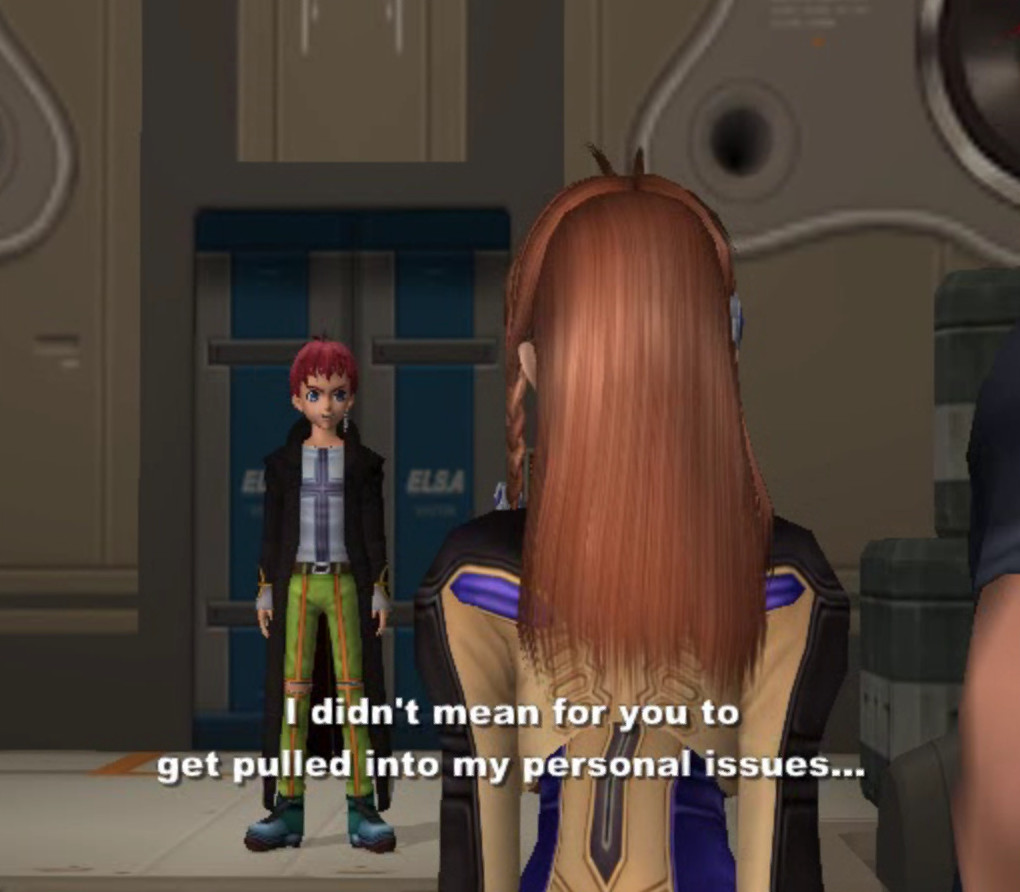

Xenosaga is part prequel to, part remake of Xenogears (which was rushed to completion, and the planned sequel never greenlit). Canonically, however, they are separate entities, Gears owned by Square and Saga by Namco. In other words, this universe has been made twice, and that is a testament to the faith of Tetsuya Takahashi and Soroya Saga (husband and wife co-writers) in their ideas.
Sadly, Xenosaga, planned as a six game series, ended after three. The fate of a Takahashi-Saga universe is to fizzle out prematurely. This is a canon event.
I want to say “The candle that burns fast burns bright”, but it would been ironic considering the slow burn of the game itself. That’s where most critics leave their analysis of Xenosaga: the length of the cutscenes. They should be talking about the depth of the mystery, the richness of the universe, and the quirks of the characters. These are what makes Xenogears and the Xenosaga series, however truncated, exceptional.
From the sci-fi megabuildings like the Durandal (a spaceship which becomes the government building for a planet when it lands vertically) to the design details of the UMN (just a menu screen, but with the in-universe role of being a popular app), this world is big, original and immersive. It has the production values to back up that ambition: despite leaving Square, Xenosaga can almost compete with Final Fantasy in the department.
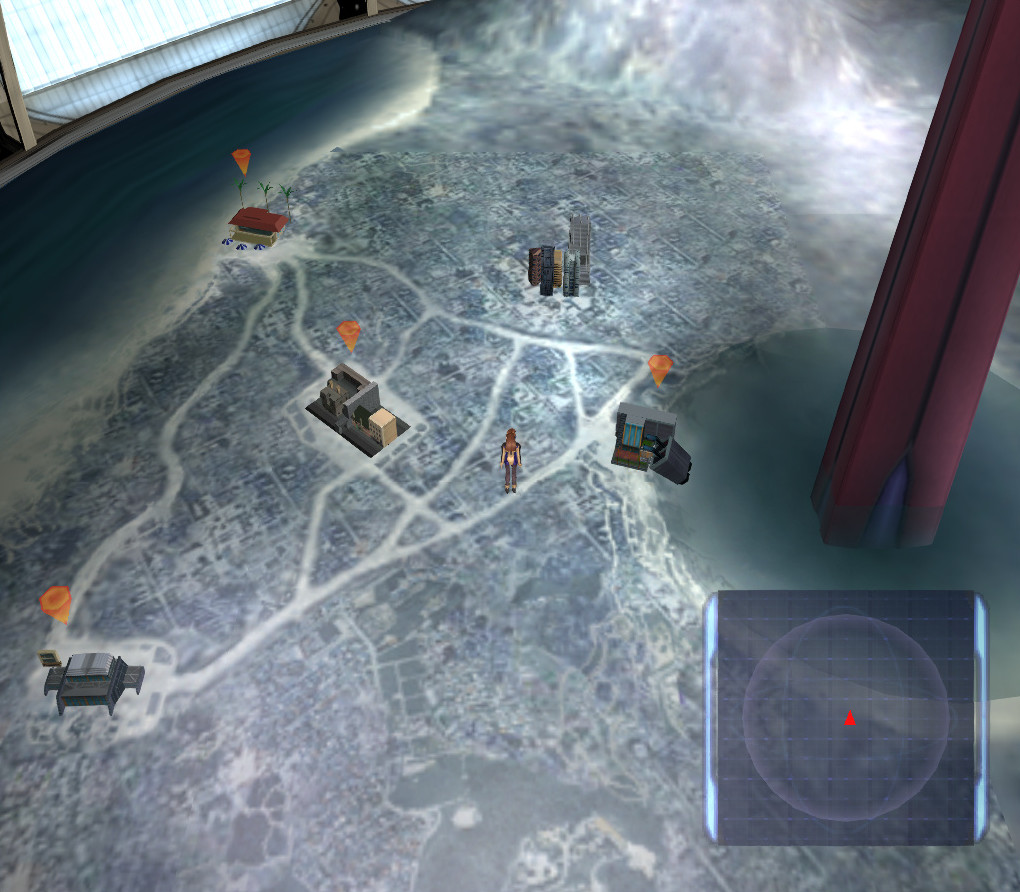
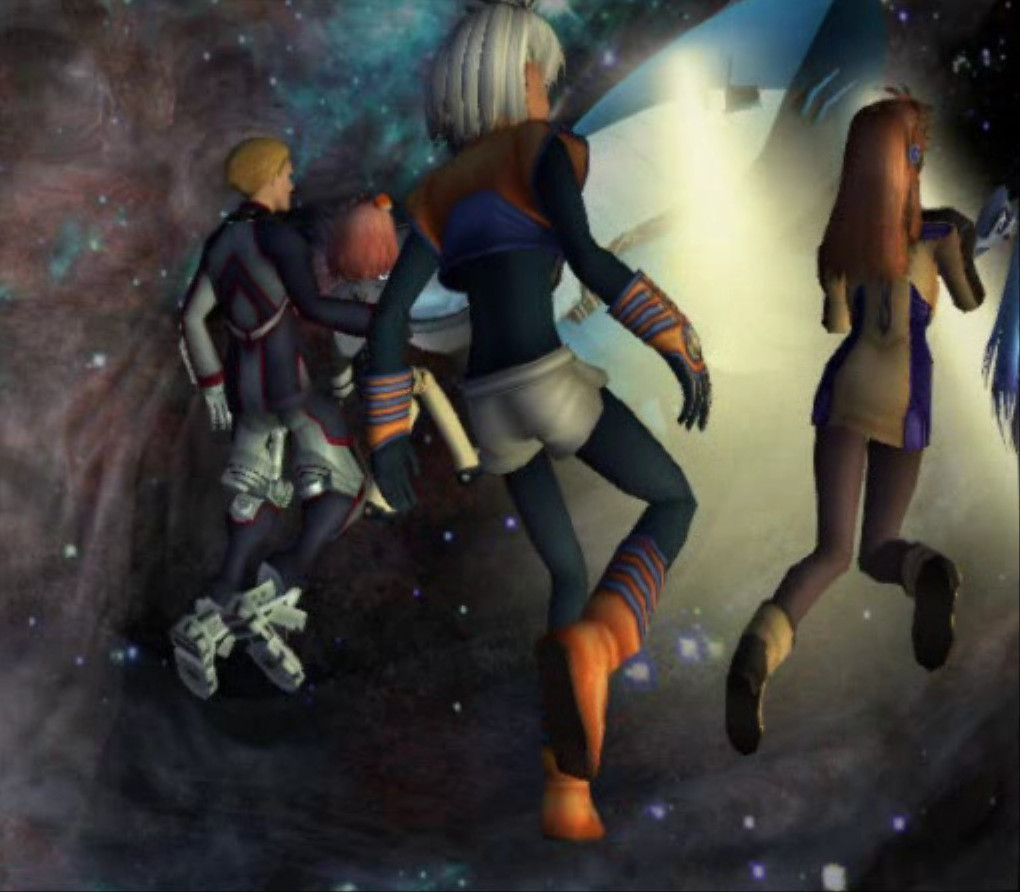
Lots of JRPGs, especially in the Final Fantasy series, reference Star Wars, but Xenosaga draws on a deeper creativity, feeling like Star Wars while looking nothing like it; capturing the imagination and excitement of a sci-fi classic without referencing any. Xenosaga is, simply, great science fiction.
Part 2: Mechanics
Earlier I compared a character to an action figure. Well, that metaphor also extends to the levelling, where there is not just one system to play with, but several. EXP, TP, SP, and EP are gained after battle, and they can all be spent on different aspects of your character. EP is spent in a tech tree to acquire new magic. TP is spent making your technical attacks faster or more powerful.
UX designers aim to delight their users; I find the various systems in Xenosaga delightful. They are like a sushi selection: simple, varied, and finely crafted. Levels are dotted with enticing red doors, the keys to which are found in other levels. Behind the doors you find unique accessories that impart skills. Spend enough SP teaching your characters skills, and you level up to a new skill tier. Every stage of this process is enjoyable in itself. Combined? This is the stuff addictive side activities are made of.
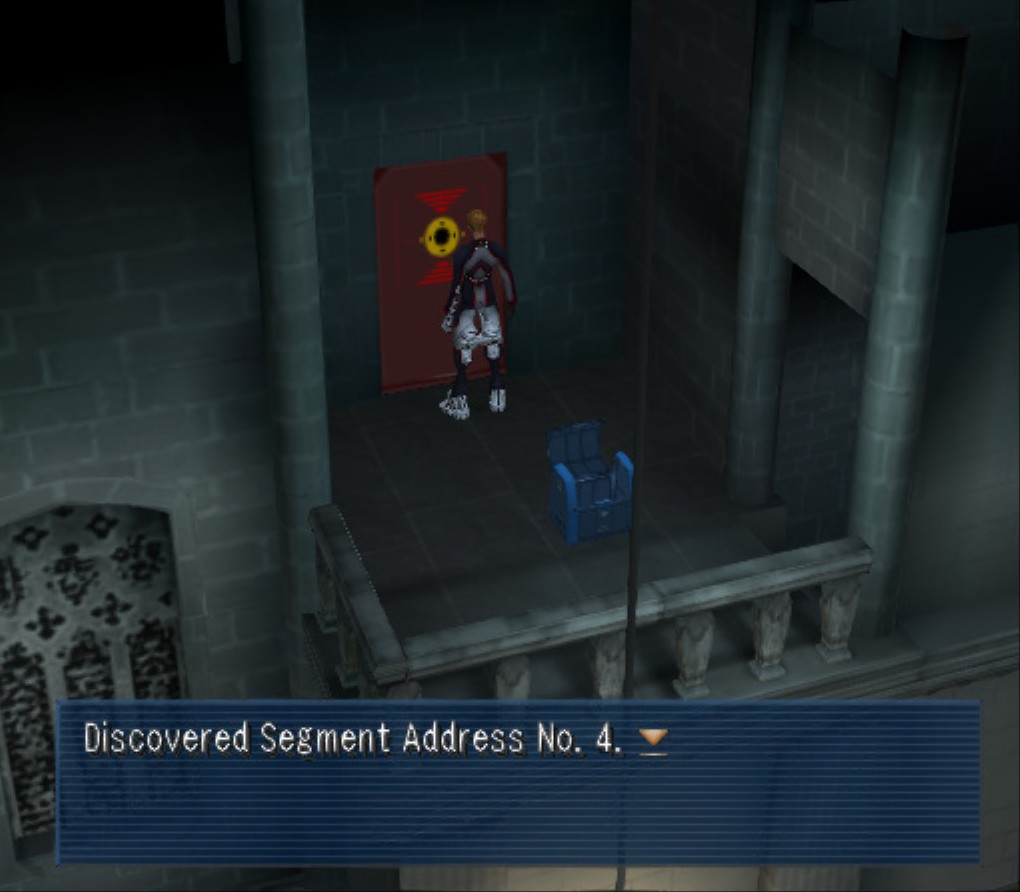
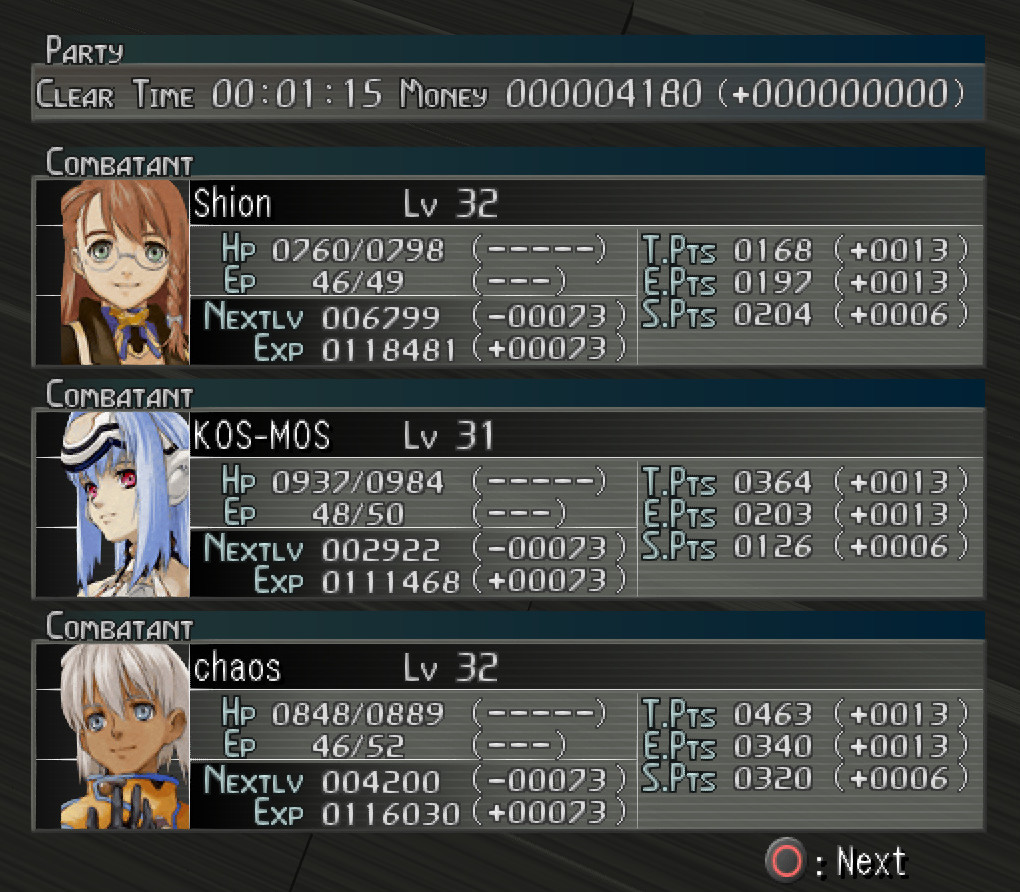
It’s a shame the decoders, which open the doors, are so well hidden you might need a guide to find them. Occasional obtuseness in Xenosaga can be a small impediment to fun. It also made the end of the game challenging for me, as I didn’t understand what the appropriate way to spent TP was. Somewhat counterintuitively, you should spend a lot of them on stats, not techniques. I understand that obtuseness also affects Xenosaga Episode II, but I’ll be prepared for it when I get there.
In Xenogears, I was unimpressed by how characters had a random selection of ether skills, rather than ones that best fit their character. Xenosaga does better. First, because characters can transfer ether skills, there’s no requirement to make their natural spells balanced. Therefore, the spells a designed to fit the character. Second, each character has a unique spell intro animation that fits the nature of their power.
Attack effects are a work of art. They hit hard, supported by a sharp and varied library of sound effects and screen shake or a camera swing when appropriate. They are visually complex, with unique particles, glows and overlapping layers. They suit the character that uses them. KOS-MOS attacks with quick slashes and lasers, while Shion, the scientist, uses a type of magic that requires the use of a multicoloured “ether circuit”.


Rule-bending is a thrill in any game, and the most thrilling mechanic in Xenosaga battles is the boost system, where at the press of a button you can force one of your characters to the front of the turn order. It works in tandem with the second most thrilling system in Xenosaga battles. Three battle bonuses rotate from one turn to the next: act on a particular turn and you can guarantee yourself a critical hit. Kill a foe on a particular turn and you multiply your end of battle rewards. Getting a 10x bonus is a euphoric experience.
Xenosaga is not more concerned with philosophy and world building than fun and mechanics. It is filled with systems that are delightful, good-natured, smart, and original. In my head, the Xenosaga lead designer has a curly white beard and smiles a lot.
Conclusion
This review is in two parts because that’s how Xenosaga Episode I is. One half epic sci-fi anime, one half addictive character levelling adventure. There were times I wanted a cutscene to end and give me control again, and I’m a pretty patient guy.
Some will argue that this is an inelegant way to tell an epic story in a videogame, but I disagree. It does what all JRPGs were doing at this time. It just goes hard as fuck on both parts of the experience: the anime, and the RPG.
Takahashi and Saga made a JRPG like no other, and I’m only one-third of the way through it.

